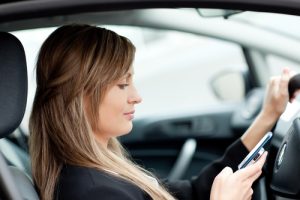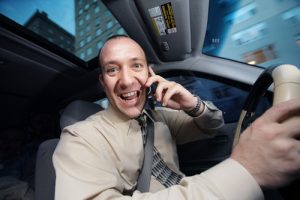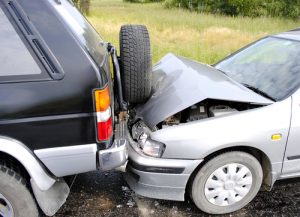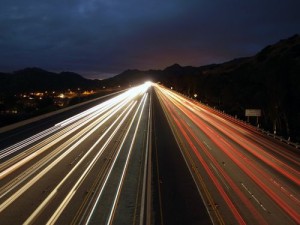 Among all of the traffic fatalities that happen each year in Los Angeles, almost half are pedestrians or cyclists. This is true even though pedestrians and cyclists are involved in around 14 percent of traffic accidents in the city. In order to combat this problem, the City of Los Angeles implemented the Vision Zero initiative, which is a concerted effort to eliminate traffic deaths and serious injury accidents by 2025. The primary focus is on pedestrians and bicyclists since they have the highest risk of death. To carry out the city’s initiative, the Los Angeles Vision Zero Alliance is working towards bringing the goals to fruition.
Among all of the traffic fatalities that happen each year in Los Angeles, almost half are pedestrians or cyclists. This is true even though pedestrians and cyclists are involved in around 14 percent of traffic accidents in the city. In order to combat this problem, the City of Los Angeles implemented the Vision Zero initiative, which is a concerted effort to eliminate traffic deaths and serious injury accidents by 2025. The primary focus is on pedestrians and bicyclists since they have the highest risk of death. To carry out the city’s initiative, the Los Angeles Vision Zero Alliance is working towards bringing the goals to fruition.
Vision Zero is a collaborative, worldwide effort aimed at eliminating traffic deaths by involving multiple government departments and agencies utilizing accident data in order to identify and address the highest risk categories and areas. Because they have very little protection, pedestrians and bicyclists are the most vulnerable of all people traveling on the roads.
Mayor Eric Garcetti issued an executive directive on Aug. 24, 2015, which established the Vision Zero initiative in Los Angeles as a citywide effort. Prior to that, the Los Angeles Department of Transportation had adopted the initiative in Sept. 2014 as a component of the department’s strategic plan. The City Council likewise adopted Vision Zero in Jan. 2016, making it a key part of the City’s Mobility Plan 2035.
 California Accident Attorneys Blog
California Accident Attorneys Blog


 Are Milliennials the worst drivers? Do they pose the biggest safety risk of any demographic behind the wheel? As the use of smartphones and other technology has become pervasive over the 15 years, distracted driving and its dangers have increasingly come into focus. Multiple studies have demonstrated the dangers of distracted driving. Recently, the AAA Foundation for Traffic Safety conducted a study with drivers of different age groups and found that millennials who were ages 19 to 24 engaged in the riskiest driving behaviors, and some of those behaviors were directly related to technology use while driving. When people engage in dangerous driving behaviors such as texting and driving, they place both themselves and others at risk of severe injuries in accidents. An experienced Los Angeles personal injury lawyer might help the victims of distracted drivers with recovering damages to compensate them for their losses.
Are Milliennials the worst drivers? Do they pose the biggest safety risk of any demographic behind the wheel? As the use of smartphones and other technology has become pervasive over the 15 years, distracted driving and its dangers have increasingly come into focus. Multiple studies have demonstrated the dangers of distracted driving. Recently, the AAA Foundation for Traffic Safety conducted a study with drivers of different age groups and found that millennials who were ages 19 to 24 engaged in the riskiest driving behaviors, and some of those behaviors were directly related to technology use while driving. When people engage in dangerous driving behaviors such as texting and driving, they place both themselves and others at risk of severe injuries in accidents. An experienced Los Angeles personal injury lawyer might help the victims of distracted drivers with recovering damages to compensate them for their losses.
 A class action lawsuit was recently filed in Los Angeles Superior Court against smartphone giant Apple. The lawsuit is seeking to hold Apple liable for a number of different automobile collisions that happened when drivers were distracted by texting or using features like apps on their iPhones while driving.
A class action lawsuit was recently filed in Los Angeles Superior Court against smartphone giant Apple. The lawsuit is seeking to hold Apple liable for a number of different automobile collisions that happened when drivers were distracted by texting or using features like apps on their iPhones while driving. Beginning on Jan. 1, 2017, drivers in California will be prohibited from holding their cell phones while they drive. Governor Jerry Brown signed AB 1785 in September, and its effective date is on Jan. 1, 2017. The law prohibits holding a cell phone while driving for any purpose, including checking maps, texting, talking or for any other reason.
Beginning on Jan. 1, 2017, drivers in California will be prohibited from holding their cell phones while they drive. Governor Jerry Brown signed AB 1785 in September, and its effective date is on Jan. 1, 2017. The law prohibits holding a cell phone while driving for any purpose, including checking maps, texting, talking or for any other reason. A recent personal injury case that was heard in Los Angeles Superior Court demonstrates a legal concept that is called the eggshell plaintiff rule as well as the difficulties with proving injuries in minor impact soft tissue cases. People who have received soft tissue injuries such as whiplash injuries or others in accidents that were caused by the negligence of other people might need to get help from an experienced personal injury attorney.
A recent personal injury case that was heard in Los Angeles Superior Court demonstrates a legal concept that is called the eggshell plaintiff rule as well as the difficulties with proving injuries in minor impact soft tissue cases. People who have received soft tissue injuries such as whiplash injuries or others in accidents that were caused by the negligence of other people might need to get help from an experienced personal injury attorney.
 Is there a moral dilemma for self-driving cars? As the time nears when autonomous cars may make a full entry into the marketplace, ethical questions regarding their programming may impact both public safety and the actual adoption by the public of autonomous cars. In 2015, 4.5 million people were seriously injured and almost 40,000 people were killed in traffic accidents. A large number of the accidents that occur every year are due to human error. The thought about autonomous cars is that removing the potential for human error will drastically cut down the injury and fatality rates by preventing accidents. A recent study shows a moral dilemma that exists when autonomous cars would be forced to make decisions about protecting the safety of their occupants or instead those of pedestrians.
Is there a moral dilemma for self-driving cars? As the time nears when autonomous cars may make a full entry into the marketplace, ethical questions regarding their programming may impact both public safety and the actual adoption by the public of autonomous cars. In 2015, 4.5 million people were seriously injured and almost 40,000 people were killed in traffic accidents. A large number of the accidents that occur every year are due to human error. The thought about autonomous cars is that removing the potential for human error will drastically cut down the injury and fatality rates by preventing accidents. A recent study shows a moral dilemma that exists when autonomous cars would be forced to make decisions about protecting the safety of their occupants or instead those of pedestrians. Speeding is one of the most common causes of motor vehicle accidents
Speeding is one of the most common causes of motor vehicle accidents A California woman was awarded more than $2.8 million by a jury as compensation for past and future damages for injuries she suffered in a car accident. The verdict appears to rely on a legal doctrine known as the “eggshell plaintiff rule.” Although generations of budding attorneys have learned about the rule in law school, its significance in personal injury cases is oftentimes lost to anyone who has not been subjected to a professor’s lecture about it in a first-year torts class. It is still a useful and practical argument for party’s who have pre-existing medical conditions who suffer emotional or physical harm due to negligence. Such was the case here.
A California woman was awarded more than $2.8 million by a jury as compensation for past and future damages for injuries she suffered in a car accident. The verdict appears to rely on a legal doctrine known as the “eggshell plaintiff rule.” Although generations of budding attorneys have learned about the rule in law school, its significance in personal injury cases is oftentimes lost to anyone who has not been subjected to a professor’s lecture about it in a first-year torts class. It is still a useful and practical argument for party’s who have pre-existing medical conditions who suffer emotional or physical harm due to negligence. Such was the case here. Among all of the traffic fatalities that happen each year in Los Angeles, almost half are pedestrians or cyclists. This is true even though pedestrians and cyclists are involved in around 14 percent of traffic accidents in the city. In order to combat this problem, the City of Los Angeles implemented the Vision Zero initiative, which is a concerted effort to eliminate traffic deaths and serious injury accidents by 2025. The primary focus is on pedestrians and bicyclists since they have the highest risk of death. To carry out the city’s initiative, the Los Angeles Vision Zero Alliance is working towards bringing the goals to fruition.
Among all of the traffic fatalities that happen each year in Los Angeles, almost half are pedestrians or cyclists. This is true even though pedestrians and cyclists are involved in around 14 percent of traffic accidents in the city. In order to combat this problem, the City of Los Angeles implemented the Vision Zero initiative, which is a concerted effort to eliminate traffic deaths and serious injury accidents by 2025. The primary focus is on pedestrians and bicyclists since they have the highest risk of death. To carry out the city’s initiative, the Los Angeles Vision Zero Alliance is working towards bringing the goals to fruition.